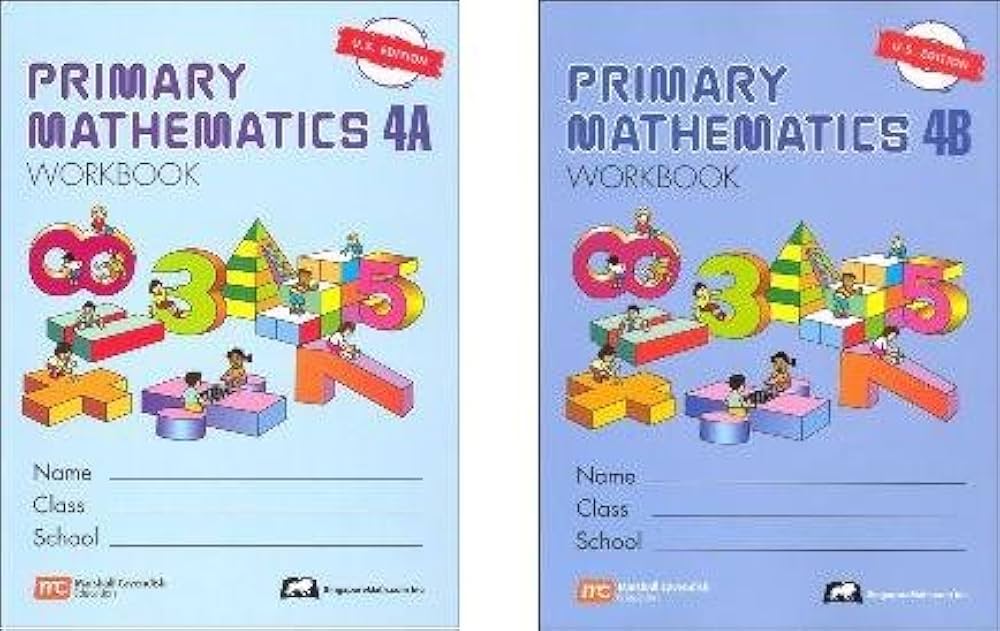Ways to inspire confidence in students experiencing struggles in primary math
Unveiling the very best Shortcuts for Addressing Mathematics Problems Promptly
In the domain name of mathematics, efficiency is vital. Mastering shortcuts can transform the means individuals come close to issues. From leveraging the distributive home to utilizing fast reproduction techniques, these methods improve both speed and precision. In addition, acknowledging patterns streamlines complex calculations. As one explores these techniques, they may reveal shocking insights that can alter their mathematical experience. What are the most effective strategies that can be quickly integrated right into day-to-day technique?
Grasping Mental Mathematics Techniques
Just how can one improve their estimation rate without counting on calculators? Grasping mental math methods uses a useful service. By employing approaches such as breaking numbers right into smaller, manageable components, individuals can streamline intricate estimations. When adding two-digit numbers, rounding each number to the nearby ten can make mental enhancement less complicated prior to adjusting back to the initial values.
One more efficient approach is to practice reproduction tables thoroughly, enabling quick recall of items (struggles in primary math). Additionally, recognizing patterns in numbers can assist in much faster computations, such as using the residential properties of also and strange numbers. Normal method via problems and video games can even more fine-tune these abilities, making psychological math extra intuitive
Ultimately, cultivating self-confidence in one's arithmetic capabilities enables quicker decision-making and improves total mathematical efficiency. By incorporating these methods, anybody can substantially enhance their estimation speed.
Utilizing the Distributive Building
The Distributive Property is a fundamental principle in maths that streamlines computations by enabling multiplication across enhancement or reduction. It is necessary for trainees to understand its application with practical instances, which can boost their analytical skills. Additionally, identifying typical errors can further strengthen their understanding and stop errors in future calculations.
Recognizing the Distributive Building
Grasping the distributive home can significantly streamline mathematical computations. This fundamental building states that when multiplying a single term by an amount or difference, one can disperse the multiplication throughout each term within the parentheses. For instance, in the expression a(b + c), one can revise it as abdominal + ac. This technique not only enhances calculations yet also boosts understanding of how numbers connect (struggles in primary math). The distributive home is specifically helpful in algebra, where it assists in simplifying expressions and fixing equations. Furthermore, it lays the foundation for much more intricate concepts, such as factoring and polynomial operations. By realizing the distributive residential or commercial property, pupils can develop a solid structure for tackling a variety of mathematical challenges effectively
Practical Instances Illustrated
Why is it vital to apply the distributive home in sensible scenarios? The distributive home permits people to simplify intricate calculations, making problem-solving much more effective. As an example, when calculating the total cost of several products, one can utilize the expression 5(2 + 3) to discover the complete price of 5 things valued at $2 and $3. By dispersing, the computation comes to be 5 × 2 + 5 × 3, generating a quicker outcome of $25. An additional instance remains in algebra, where streamlining expressions like 3(x + 4) can be attained with circulation, causing 3x + 12. Such applications highlight the performance of this building in numerous real-world scenarios, boosting both speed and precision in mathematical analytic.
Usual Errors to Stay Clear Of
The distributive building is an effective tool in mathematics, typical errors can lead to inaccurate results. When pupils neglect to distribute the coefficient to each term within parentheses, one frequent mistake occurs. For example, in the expression 3(x + 4), falling short to apply the residential or commercial property correctly can bring about omitting the multiplication, generating an inaccurate solution. An additional mistake entails misapplying the building by adding as opposed to multiplying, specifically when unfavorable indicators are involved. In addition, students may neglect to simplify the last result, which can unknown errors made during circulation. Recognizing and avoiding these challenges can boost analytical performance and accuracy when using the distributive residential or commercial property in numerous mathematical contexts.
Quick Multiplication Shortcuts
In the domain name of quick multiplication shortcuts, strategies like multiplying by powers of 10 and the doubling and halving method stand apart. These approaches can significantly streamline estimations, making them more available. Recognizing these faster ways can enhance effectiveness in mathematical analytic.
Increasing by Powers of 10
When increasing by powers of 10, the process becomes remarkably simple, as the procedure primarily involves moving the decimal point. As an example, increasing a number by 10 calls for relocating the decimal one area to the right, while increasing by 100 demands a change of two places. This simpleness encompasses larger powers, where each added absolutely no shows an additional decimal shift. Multiplying 5.6 by 1,000 outcomes in 5,600. This approach greatly boosts rate and accuracy, as individuals can quickly visualize the outcome without intricate estimations. Such performance is especially helpful in psychological mathematics or when time is restricted, enabling rapid problem-solving in numerous mathematical contexts. Understanding this method is necessary for any individual intending to enhance their arithmetic abilities.
Increasing and Halving Method
The Increasing and Halving Method offers an effective strategy for fast multiplication, particularly when managing even numbers. This technique entails transforming a multiplication problem right into an easier form by either increasing one of the numbers and cutting in half the other. To calculate 16 × 25, one can cut in half 16 to get 8 and dual 25 to obtain 50, resulting in 8 × 50, which equates to 400 (struggles in primary math). This approach simplifies calculations, making them a lot more manageable. It is specifically helpful in psychological mathematics, allowing people to work with problems quickly and properly. By leveraging this technique, professionals and pupils can enhance their mathematical agility, consequently boosting general effectiveness in mathematical jobs

Efficient Division Methods
Although department usually poses challenges for several learners, employing efficient strategies can greatly simplify the process. One reliable approach is using suitable numbers, which involves rounding the divisor and reward to much easier worths that are close to the original numbers. This approach makes mental estimations more convenient. Another approach is the estimate technique, where learners can find a harsh solution prior to implementing the exact division, providing a useful benchmark for accuracy.
The lengthy division technique continues to be a staple for dividing bigger numbers. By damaging the procedure right into smaller sized, a lot more digestible actions, learners can keep quality. The duplicated subtraction technique can also be handy, specifically for those that battle with even more abstract ideas. By methodically deducting the divisor from the reward, people can visualize the procedure. Generally, these techniques can improve department abilities, resulting in quicker and more precise problem-solving capacities.
Quick Enhancement and Subtraction Methods
Exactly how can learners enhance their rate and precision additionally and reduction? One effective technique is to use psychological math methods, such as damaging numbers right into smaller sized, more workable parts. When adding 47 and 36, one can initially include 40 and 30 to get 70, after that add the remaining 7 and 6 to get here special info at 83. This approach streamlines estimations and minimizes errors.
An additional technique involves utilizing the number line for visual students, aiding them to see the connections between numbers and improve their comprehension. Additionally, exercising with devices like flashcards can enhance quick recall of standard amounts and differences.
Students can profit from familiarizing themselves with benchmark numbers, such as rounding to the nearby ten, which allows for quicker estimates. By integrating these methods right into their technique, students can considerably boost their speed and accuracy in standard math operations.
Leveraging Evaluation for Quick Calculations
Estimate acts as an effective tool for boosting calculation speed, enhancing mental mathematics approaches efficiently. By rounding numbers to their nearest whole values, people can streamline complicated estimations, making it less complicated to get to an approximate outcome quickly. As an example, when confronted anonymous with a trouble like 198 + 267, rounding to 200 + 270 returns a fast estimate of 470, permitting the solver to analyze the precision of the last answer.
Estimate is specifically beneficial in scenarios involving reproduction and department. By rounding factors to simpler numbers, one can swiftly evaluate approximate products or quotients. This method not only saves time but also assists in recognizing prospective errors in estimations.
Recognizing Patterns and Solutions
Patterns and solutions are vital devices in maths that allow individuals to resolve problems more successfully. Identifying these patterns permits students to identify connections between principles and numbers, which can simplify complicated estimations. Recognizing the square formula (ax ^ 2 + bx + c = 0) facilitates fast remedies to different formulas.
Patterns in series, such as math or geometric developments, assistance people anticipate future terms without extensive calculations. Formulas, on the various other hand, function as faster ways, permitting for faster analytic by enveloping complex partnerships into convenient expressions.
Frequently Asked Inquiries
Exactly How Can I Enhance My Emphasis While Resolving Math Issues Swiftly?
To enhance emphasis while fixing mathematics issues swiftly, one can get rid of disturbances, established details objectives, method mindfulness methods, take routine breaks, and preserve a constant study routine to boost focus and psychological clearness.
What Apps or devices Aid with Quick Math Problem-Solving?
Numerous devices and applications, such as Photomath, Microsoft Math Solver, and Desmos, enhance fast mathematics analytical. These resources offer detailed remedies, graphing capacities, and instantaneous comments, making them important for specialists and trainees alike.
Are There Details Mathematics Shortcuts for Standardized Tests?
Yes, details math shortcuts for standard tests consist of strategies like evaluation, understanding number homes, utilizing the procedure of elimination, and mastering usual formulas. These approaches improve speed and precision, improving total test efficiency.

Exactly how Do I Practice Math Shortcuts Effectively?
To practice math faster ways successfully, individuals must on a regular basis resolve varied problems, use on-line resources, and participate in timed drills. Uniformity and representation on mistakes improve understanding, eventually bring about improved speed and precision in estimations.
Can Shortcuts Be Applied to Complex Math Issues?
Faster ways can without a doubt be used to complex math issues, although their efficiency differs. Proficiency of fundamental principles and strategic thinking enables individuals to simplify processes, making it much easier to deal with detailed estimations successfully.
By employing strategies such as breaking numbers into smaller, manageable parts, individuals can simplify complex calculations. Additionally, recognizing patterns in numbers can help with faster calculations, such as using the homes of even and strange numbers. Estimation serves as an effective device for boosting computation speed, matching mental math approaches properly. By rounding numbers to their local entire worths, individuals can simplify intricate estimations, making it much easier to show up at an approximate result quickly. Identifying these sites patterns enables learners to identify partnerships in between concepts and numbers, which can streamline intricate computations.